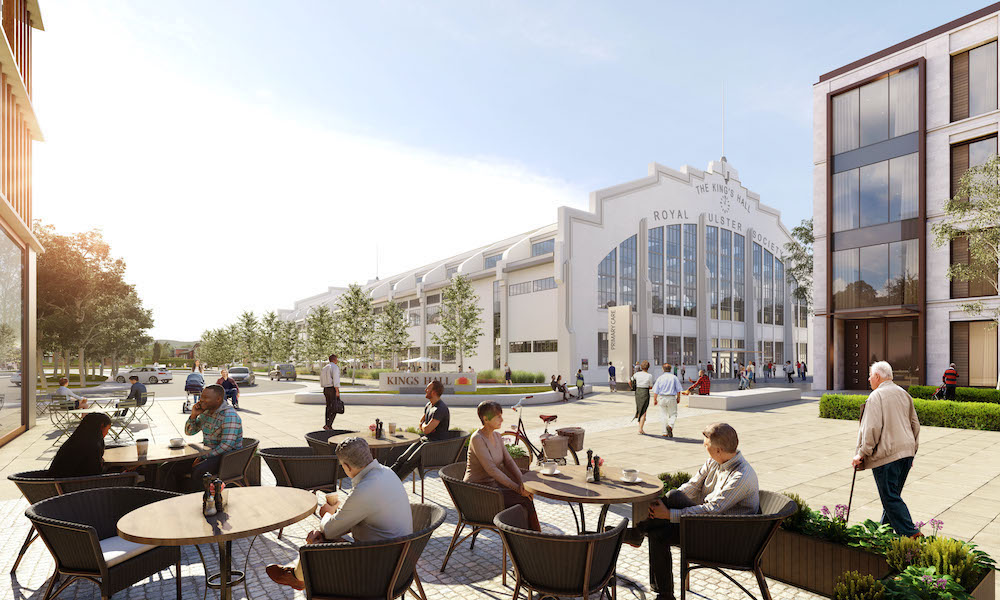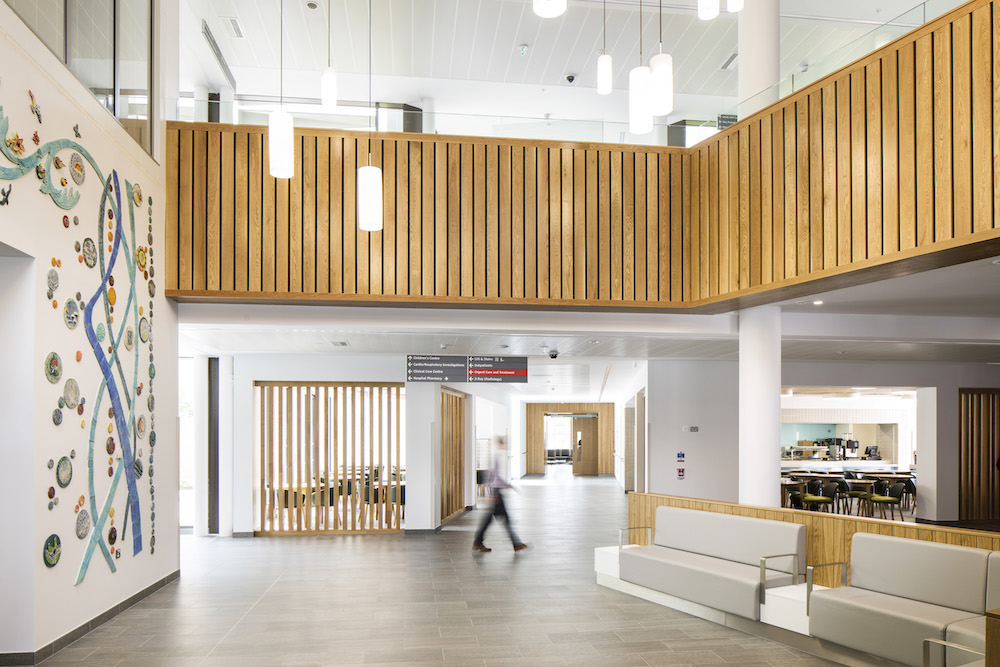Primary & community care / New models of care
Comment
Healthcare as a pillar of the community
21 Apr 2022 | 0
Andrew Murray considers how the pandemic has re-underlined the importance of models that bring care closer to the community, and healthcare’s role in revitalising ailing town centres and high streets.
As part of its plan to tackle the 6.1 million-strong treatment backlog and the huge waiting lists for non-urgent hospital care in the wake of the coronavirus pandemic, NHS England has pledged to spend £2.3bn to set up at least 100 community diagnostic centres (CDCs) and surgical hubs by early 2025. While much of the ensuing debate continues to revolve around funding levels, staff availability, and what patients might lose or gain from a non-traditional hospital setting, a question remains on how best to deliver these hubs and where to locate them within such a short timeframe.
Despite the headlines, the separation of planned care from emergency care is not a new concept and the good news is that those of us charged with the design and delivery of these schemes have plenty of examples of community-based primary and elective care to draw upon.
Healthcare professionals in England might wish to consider how Northern Ireland has been setting the pace in community-based healthcare provision for some years. In 2005, the province’s former Department of Health, Social Services and Public Safety published a 20-year strategic framework for primary care, recognising the need for wider development of community-based alternatives to hospital admission. In subsequent years, policy decisions in Northern Ireland have seen a shift of service provision away from hospitals and towards care in the community, via an integrated model of health and social care.
Over time, several health and social care hubs have been developed, often co-located with other community resources. The Grove Wellbeing Centre in North Belfast, for example, was one of the first of its kind to offer health, leisure and library facilities all under one roof. The scheme has become a focal point for the local community, not only offering primary healthcare services but also promoting healthy lifestyles that can have a significant impact on public health and future health and social care costs.
Aside from being easily accessible for both patients and staff, these health and social care hubs bring a sense of vitality and excitement to communities with their mix of uses. While there are perhaps some design challenges in the co-ordination of different uses and potential planning bureaucracy with regard to bringing different use classes together, these hubs serve as a fitting template of what can be achieved.
Repurposing redundant retail space
One of the biggest stumbling blocks to the delivery of CDCs and surgery hubs in England is the availability and cost of land, particularly in prime and populous locations, such as London and the South East, where the competition from residential can see sites quickly snapped up. Given the speed at which these hubs need to be delivered, it would be reasonable to assume that the adaptive reuse of redundant retail space in urban centres should form part of the plan. These spaces are not only accessible and serve a large patient population but their configuration and ceiling heights often make them easily and immediately adaptable, whether to modular operating theatres or to accommodate vital equipment for diagnostic purposes, such as MRI scanners.
Based on recent experience in delivering a series of adaptive ‘cube’ Covid-19 test centres in high street locations throughout Britain for laboratory diagnostics company Randox, we know how feasible and cost-effective these conversions are – and how quickly they can be delivered. Using a modular format, the sites can be operational within weeks and be redeployed if required. While initially used to enhance the UK’s Covid-19 testing capacity during winter – with each laboratory having a daily capacity of 12,000 tests – an important aspect of these ‘cubes’ is their ability to be repurposed to meet the UK’s post-pandemic diagnostic requirements, improving patient outcomes and reducing the burden on local healthcare services well into the future.
Healthcare to the rescue of high streets
Using ailing high streets and shopping centres to create walk-in clinics, diagnostic and elective care facilities, as well as GP group practices, is a sensible proposition and should be part of the healthcare rescue plan in the UK, as well as local authorities’ town centre recovery plans. In addition to being able to walk to a cafe to meet friends, visit the local cinema, and play an active role in the community, having easy access to healthcare provision could be a positive influencer in bringing footfall back into town centres. In this sense, CDCs can play an important role in allowing high streets to rediscover their community purpose and reconfigure as ‘community hubs’, as retail guru Bill Grimsey has argued they must if they are to survive. 
There has been some question as to whether the public will feel comfortable visiting non-traditional healthcare settings such as shopping centres for diagnosis and elective treatment, but the pandemic has made a visit to the high street library, community hall or pharmacy for testing, vaccination or non-urgent treatment a routine for many. In the USA, walk-in clinics have long been an integral part of shopping centre facilities, with a third of all urgent cares now taking place inside malls, according to the Urgent Care Association of America. Here in the UK, even before the pandemic, partnerships between local authorities, NHS trusts and other health providers had started to realise the benefits of integrated health facilities as part of the residential and retail development mix.
At the Royal Docks in Newham, for example, where a major residential and mixed-use development is being delivered on the banks of the River Thames, the section 106 funding from the regeneration projects has been used to lease units at Royal Wharf to provide a health centre, offering GP services alongside a range of community health, social care and clinical services, to meet the demands of the area’s increasing demographic and ageing population. In future, it would be beneficial if healthcare hubs can become an intrinsic part of the masterplan for major new residential developments and urban extensions.
Perhaps a benchmark for this kind of community-based integrated healthcare can be seen in south Belfast, where work has been carried out with healthcare developer Benmore Octopus on the design of a masterplan to transform the King’s Hall heritage site as part of a wider residential, lifestyle, leisure and wellbeing park. Here, research, treatment and residential care are co-located, fostering a culture ‘place’ where both diagnosis and treatment are considered side by side.
Alongside a range of primary healthcare services and life sciences, the King’s Hall site will have senior residential and nursing care located close to an established community, as well as assisted living spaces providing transitionary and specialist care. All of this will be set amid a thriving, multi-generational environment of eateries, retail and leisure facilities. The site is located adjacent to an existing residential area of Belfast, and by rooting itself close to an established community and distinct character of place, it has attracted private medical providers, who are creating a diagnostic centre and surgical hub as part of the wider health and wellbeing campus. An economic impact assessment suggests the King’s Hall Health and Wellbeing Park will boost the Northern Ireland economy by £47 million a year while also improving access to services for patients.
A rural approach 
This is not to say that traditional healthcare-specific campuses no longer have a role to play in community settings. Adaptive reuse of shopping centres for CDCs and surgical hubs makes sound sense in densely populated urban and city-centre locations where land is in short supply; however, in rural or semi-remote urban locations, the co-location of healthcare services will remain a necessity to maximise NHS resources and improve the patient pathway. Commonly referred to as health and wellbeing centres or community treatment and care centres, these ‘one-stop shop’ facilities typically include GPs, consulting and treatment suites, physiotherapy, paediatrics, dentistry, and occupational and speech therapy, together with social services such as homecare, primary mental health teams, and outsourcing centres. The design of these environments has, at its core, simple-to-access healthcare, making it easier for patients to get tests closer to home, and reducing the number of visits by delivering multiple tests and consultations in a single appointment and location.
As architects, we’ve been widely involved in this model of care in Northern Ireland, including the award-winning Omagh Hospital & Primary Care Complex, which comprises a range of hospital and community healthcare services together in one place.
Clearly, population-based planning of services will decide on the requirement for and location of CDCs and surgical hubs versus the traditional healthcare campus. A degree of strategic thinking is also needed to take us beyond the immediate emphasis on clearing the surgery backlog. Covid-19 aside, increasing demands placed on health services by growing and ageing populations, coupled with rising patient expectations, will continue to pile more pressure on the successful delivery of an accessible public health system. Community-based primary and elective care has a definite role to play, but we need to ensure that the investment made in these facilities today delivers a valuable, longer-term asset for the provision of healthcare for all and for many years to come.
About the author
Andrew Murray is a director of TODD Architects, working across the public and private sectors, with a particular focus on healthcare. He has been involved in various redevelopment projects within the Ulster and Antrim Area Hospitals, and led the design and delivery of the Omagh Hospital and Primary Care Complex. Andrew is also now leading the practice’s drive into the wider healthcare market in Britain.
Organisations involved
